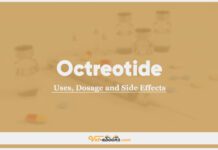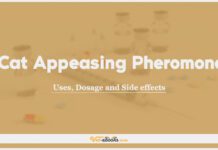Proligestone In Dogs & Cats: Uses, Dosage and Side Effects

Overview
- Alters the transcription of DNA, leading to alterations in cellular metabolism which mimic those caused by progesterone.
Uses of Proligestone
- This medication is used for postponement of estrus in both female dogs (bitches) and female cats (queens).
- For thin-skinned or show animals, it is recommended to administer the injection into the medial side of the flank fold to reduce the risk of coat color changes.
- While it is authorized for use in miliary dermatitis in cats, specific glucocorticoids are generally preferred for this condition.
Dose of Proligestone in Dogs and Cats
Dogs:
- 10–33 mg/kg depending on body weight:
Body weight (kg) Dose (mg)
<5 100–150
5–10 150–250
10–20 250–350
20–30 350–450
30–45 450–550
45–60 550–600
Thereafter 10 mg/kg
- For the suppression of estrus in female animals, a single dose should be administered.
- If permanent postponement of estrus is desired, the first dose should be given preferably before the onset of pro-estrus, followed by a second dose 3 months later, a third dose 4 months after the second, and subsequent doses every 5 months thereafter.
- After discontinuing dosing, female animals may return to estrus, typically around 6-7 months later, but it may take longer in some cases.
- In the treatment of acromegaly, doses are administered as mentioned above, given monthly by injection until signs of hair growth are evident.
Cats:
- Oestrus postponement: 100 mg/cat s.c.
- Miliary dermatitis: 33–50 mg/kg s.c. repeated once after 14 days if the response is inadequate.
Drug Dosage Calculator
You Should Give:
Side Effects of Proligestone in Dogs and Cats
- The duration of anoestrus (lack of estrus) in animals after using Proligestone cannot be reliably predicted, and some female dogs may remain in anoestrus for up to 3 years.
- Proligestone appears to have fewer and less severe adverse effects compared to other progestogens like megestrol acetate and medroxyprogesterone acetate.
- However, long-term use of progestogens, including Proligestone, may lead to various adverse effects, such as temperament changes (listlessness and depression), increased thirst or appetite, cystic endometrial hyperplasia/pyometra, diabetes mellitus, acromegaly, adrenocortical suppression, mammary enlargement/neoplasia, and lactation.
- Irritation at the site of injection is possible, and there have been reported cases of calcinosis circumscripta (calcium deposits) at the injection site.
Contraindications of Proligestone in Dogs and Cats
- Best avoided in diabetic animals, as insulin requirements are likely to change unpredictably.
- Do not give to bitches before or at first oestrus.
Some Notes:
Tip
Do You Want To Increase Your Veterinary Knowledge and Practical Skills?
You Can Now Browse and Download +3000 Books For Veterinary Professionals & Students Online.
Download Veterinary Books




















